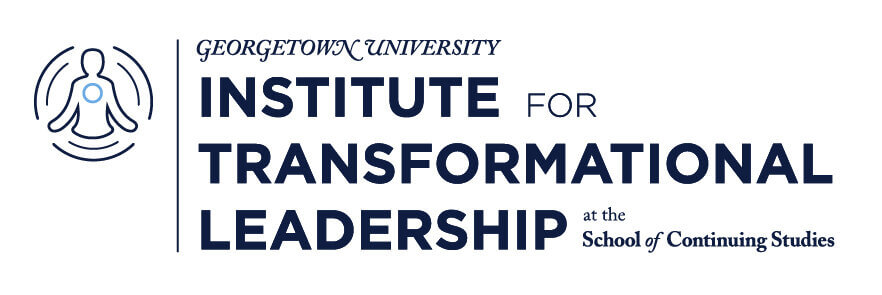Polarities in Everyday Leadership
Brian Emerson, PhD

Have you ever known a leader, team, or organization to struggle with questions like these?
- Do we draw a hard line in the sand or worry about being diplomatic?
- Do we drive empowerment in the organization or continue providing the direction that ensures success?
- Do we do what’s best for the bottom line or what’s best for the environment?
- Do we give in to our partner’s need for collaboration or do we maintain our competitive spirit?
- Do we drive to meet our teams goals or support another team so we do what’s best for the whole?
These questions, and ones like them, are polarities – they require us to balance two seemingly opposite states at one time. They can create tension and strife in groups that don’t know how to navigate them effectively and they can be leveraged for higher performance and effectiveness – if we know how.
The concept of dealing with polarities and paradox in organizations and leadership has received increased focus in both the popular and academic press during the past two decades. The growing complexity of organizations, and the interconnectedness of the global marketplace, has magnified the frequency with which organizations and leaders are faced with seemingly unsolvable situations that contain two or more opposing solutions like the ones above.
The need to effectively address these tensions has led many scholars and practitioners to say that knowing how to handle them is among the top skills needed by modern leaders (Collins; Cook-Greuter; Van de Ven & Poole). As a result, there is no shortage of literature that laments the difficulty of dealing with polarities, also known as paradoxes, dualities, dilemmas, wicked problems, etc. (Holt & Seki; Johnson; Smith & Lewis), or that discusses the growing importance for leaders and organizations to deal with them effectively (Lewis; Petrie; Solkol).
But, unfortunately, few, if any, authors tell leaders how to actually develop that skill. While many talk about polarities, few demonstrate what or how to deal with them.
Some common polarities in organizations:
Centralize::Decentralize
Structure::Flexibility
Stability::Change
Internal Focus::External Focus
Focus on Task::Focus on Relationships
Employee Needs::Organization Needs
Local Focus::Global Focus
Some common polarities for leaders:
Candor::Diplomacy
Big Picture::Details
Develop Bonds::Maintain Distance
Confidence::Humility
Control::Empowerment
Reward the Team::Reward Individuals
Collaborate::Compete
One way of effectively navigating polarities is to develop a “both/and” mindset to supplement our natural tendency to think “either/or.” When polarities like the questions listed above are approached only from an “either/or” perspective, their inherent tensions can turn dysfunctional or even destructive (e.g., draw a hard line in the sand OR be diplomatic; focus on being collaborative OR competitive, etc.). However, when leaders and systems are able to think and act from a “both/and” perspective they can outperform those who don’t and change efforts move forward with increased speed, less resistance, and more sustainability over time (Emerson).
A “both/and” approach is necessary in these situations because the poles are not opposites, although some people see them that way. The two poles are actually interdependent—they need each other. Both poles have benefits and both can be overused which creates negative impacts. When we experience the overuses with an either/or mindset, the natural solution is to “swing the pendulum” to get the benefits of the other pole. This is why so many organization transformations never get off the ground or fail to yield the desired results, because they treat polarities like problems.
Unlike problems, which are typically puzzles involving independent solutions (e.g., Do we hire Vendor A or Vendor B?), polarities require solutions that are a more complex blend of both poles. Knowing how to navigate with a both/and mindset helps us maximize the benefits of both poles while minimizing the overuses and is a key differentiator and competitive advantage for individuals, teams, and organizations (Smith & Lewis).
Unfortunately, doing so isn’t as easy as it seems—in fact, some researchers say it is nearly impossible for many adults unless they have help (Garvey Berger; Kegan; Cook-Greuter). One reason for this is we typically have a preference for one pole over the other (e.g., “I like Flexibility a little more than Structure”). This can become problematic when we start to attach part of our identity, how we want to be known in the world, to that pole (e.g. “So, I’m the one that helps the team stay adaptable, think differently, and adjust as needed”) and we begin to villainize those who prefer the other pole (e.g. “They want so much structure! They make things so rigid with their need for control!”). Without a both/and mindset these dynamics detract focus from mission, at best, but all too often destroy relationships, damage morale, and derail overall success.
The good news is there are ways to help individuals and organizations develop a “both/and” mindset. One of the most effective ways is by using a sense-making tool like the Polarity Navigator (Emerson & Lewis). Mapping is an easy way for individuals and teams to capture a polarity in a way that allows them to make sense of it and take action to navigate it more effectively. It helps leaders and teams design change initiatives focused on expanding to the new state without losing the benefits of what brought us here. The mapping process is both simple and complex. It can be learned and developed over time, allowing leaders and teams to foster and hold a both/and mindset when necessary.
When this happens, instead of polarities turning destructive, results actually improve, communication is strengthened, morale increases, and relationships deepen in ways that lead to more sustainable success.
How are polarities affecting your organization?
Reach out to explore how to navigate polarities more effectively.